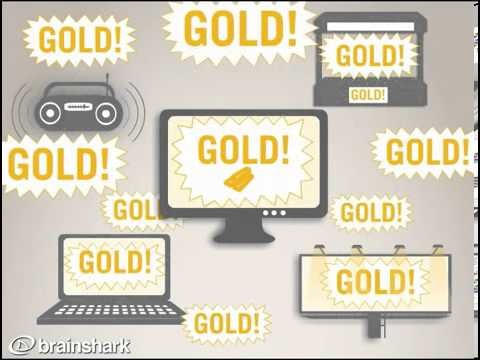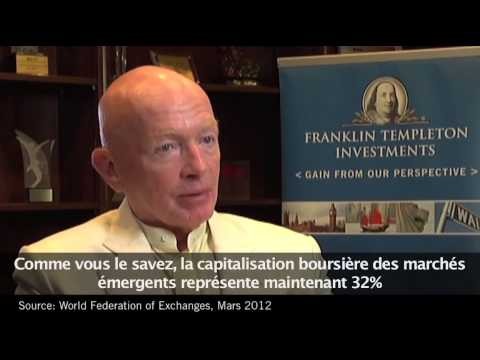Quotential One wrap with potential
Post on: 21 Август, 2015 No Comment

Quotential: One wrap with potential
These much-ballyhooed investment vehicles can contain unnecessary costs, but their allocation convenience can be a lure. ROB CARRICK assesses one product that could be worth looking at
By ROB CARRICK
Saturday, October 28, 2006
Wrap programs are one of those investing products where the most utilitarian advice is to simply avoid them, period.
High fees and lacklustre returns glossed over by marketing hype — that’s the reality of many, though not all, wrap programs. Is there such a thing as a good wrap? Let’s investigate by considering a wrap program from the mutual fund company Franklin Templeton Investments called Quotential.
Wraps, the investment industry’s term for mutual funds bundled together in a single package, are a fast-growing product with about $126-billion in assets. Quotential is a major player, with $5.7-billion in its seven portfolios, and it was also recommended by several investment advisers when they responded to a Portfolio Strategy column a few weeks ago that listed the many faults of wraps.
Can Quotential be considered an example of a good wrap? Let’s see.
The first characteristic of a wrap worth owning would be a cost of ownership that doesn’t lard in a premium above and beyond the costs associated with the various mutual funds in the portfolio. Many wraps do this, but Quotential does not. The management expense ratio for Quotential portfolios is equal to the average weighted MER of the funds they contain.
Philosophically, we look to provide reasonable pricing for consumers, and ensure that there’s good value from a money management perspective, said Elizabeth Lunney, a senior vice-president and portfolio manager with Fiduciary Trust, a division of Franklin.
This is certainly an investor-friendly approach, but don’t forget that Franklin Templeton is still making a good buck by using Quotential portfolios to siphon money into the family’s mutual funds, most of which have MERs that are robust though not excessive. Really, the question is why other companies feel they can charge a premium MER for their wraps.
The answer to the question above has to do with a supposed higher level of service that investors receive with wraps. The idea is to make investing in a wrap a special experience that rewards the client for bringing all or most of his assets instead of merely buying some of the company’s funds piecemeal.
Investors begin their relationship with Quotential by sitting down with their investment advisers and filling out a two-page questionnaire about their investing goals and personal situation. The answers to the 13 questions are used to select a portfolio and develop an investment policy statement, which is a definitive record of what you’re trying to accomplish as an investor. I’ve seen a lot of questionnaires over the years and Quotential’s looks superficial. No value here.
A much more tangible benefit of being a Quotential client is the 10-page account statement you receive every quarter. It’s state of the art and the typical statement looks utterly useless by comparison.
It’s very, very easy for clients to answer questions like how much did I put in, what’s it worth today, what’s my rate of return, Ms. Lunney said.
Most importantly, Quotential statements show personalized rates of return for various periods of time, along with a comparison to the relevant benchmarks for the stock and bond markets. There’s also detailed reporting of how the various asset classes in your portfolio are performing, and a quarter-by-quarter tax summary.
All wraps claim to offer a more detailed level of account reporting, but it’s hard to imagine anyone doing a better job than Quotential.
In-depth account reporting is great and all, but it’s just window dressing without solid investment returns. Way too often, wraps fail to deliver returns that justify the hype that they’re in a higher league of investing than bland old mutual funds (even though wraps are basically bundles of mutual funds).
The returns generated by the seven Quotential portfolios have been adequate for the most part, with all but one of the most widely held products showing above-average returns over the past three years. There’s a temptation to play down these numbers because Quotential has only been around four years, but many of the underlying mutual funds have been around for much longer.
Let’s zero in on the performance of the largest Quotential portfolio, Franklin Templeton Balanced Growth, with assets of $2.9-billion. Its compound average annual return for the three years ended Sept. 30 was 9.9 per cent, which compares with an average of 8.9 per cent for Canadian balanced funds. This result is all the more impressive because about one-third of the portfolio is invested outside Canada, where investment results over the past few years have generally lagged our domestic market.
Arguably, there’s nothing more important when selecting a wrap than verifying that the underlying funds are the sort of building blocks you want used in your portfolio. Put another way, wraps are only as good as the family of mutual funds on which they’re based. Quotential portfolios are built using the four different fund series offered by Franklin Templeton — Bissett for Canadian equities and bonds, Templeton for global stocks, Mutual for global deep-value investing and Franklin for global bonds and income. There aren’t a lot of superstar funds here, but there are more than enough quality products.
For example, the Quotential portfolios use Templeton Growth, one of the oldest and largest mutual funds in Canada and a consistently above-average performer (it used to dominate more than it does now, but that’s another story), Mutual Beacon, a very strong U.S. equity fund with a low risk profile, and Bissett Income, a top choice among Canadian income trust funds.
Let’s be honest — it’s no great feat to bundle some funds together into a portfolio. That’s why you have to ask what a wrap offers.
Quotential claims to use historical returns and risk measures to build the ideal portfolios for a client’s needs, which is boilerplate. Who wouldn’t build a portfolio that way? Still, this wrap program does offer a level of portfolio management that you’re unlikely to find if you own a bunch of funds picked by an investment adviser.
Each Quotential portfolio has a benchmark weighting for each of its constituent funds, but the actual allocations can vary by plus or minus 10 per cent depending on what the managers see ahead for the markets. For example, Ms. Lunney said Quotential began shifting from overweight Canada to neutral in summer 2005 and moving money into U.S. stocks. You’ll appreciate this if you noticed how well U.S. markets are doing this year and are concerned about the downside in a hot Canadian market.

A final point in assessing any wrap is compensation for the adviser. Many wraps offer ongoing service fees to advisers — they’re usually called trailing commissions — that are more generous than anything offered by plain mutual funds. This presents two problems.
First, there’s cause to wonder if a wrap is being suggested because it’s the best choice for you, or because it’s the most lucrative option for the adviser. Second, higher trailing commissions for the adviser add to the cost of owning a wrap.
Franklin Templeton’s approach? Pay the same trailing commissions for Quotential as for comparable mutual funds. Again, our interest is in maintaining reasonable, competitive pricing for the investor, Ms. Lunney said.
The verdict on Quotential: It’s a good wrap. The fees are reasonable, there’s tangible value, and the results, while not spectacular, should be enough to satisfy the kind of investor who wants the portfolio-in-a-box simplicity of a wrap. If you can’t say the same about any other wraps, don’t buy them.
State-of-the-art account statement
The Quotential wrap program from Franklin Templeton Investments offers account statements that are much better than average in providing information about how the money invested by clients is performing.
1. Right off the top, you’re told how much you started with in your account, how much you’ve contributed and how much you’ve made (or lost) since the start-up date.
2. The vast majority of client statements from mutual fund and investment advice firms offer only cursory information about how your account is doing, and the emphasis is usually on the previous month or quarter. Here, you get personalized rates of return over a variety of timeframes going back to the day you started your account.
3. Knowing your personal rate of return is great, but how can you tell whether the performance is adequate or not? The Quotential statement helps you here by comparing the returns of various portfolio components with their benchmark stock and bond indexes.
A good wrap?
The Quotential program from Franklin Templeton Investments is one of the more popular wraps with investment advisers and investors, with $5.7-billion in total assets. Here’s how the seven Quotential portfolios have performed in comparison to the mutual fund categories to which they’re most comparable. Note that underperformance by Quotential portfolios may partly be explained by a lower risk profile.
Portfolio
Assets (millions)














